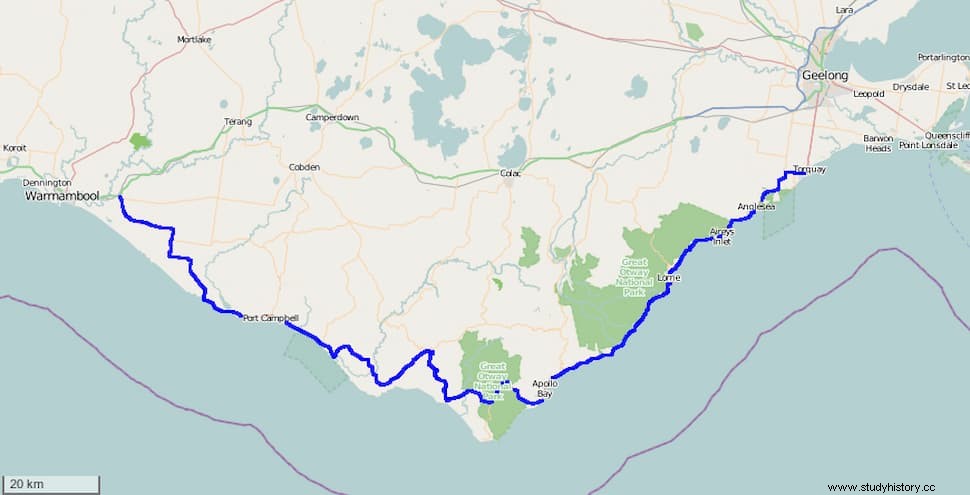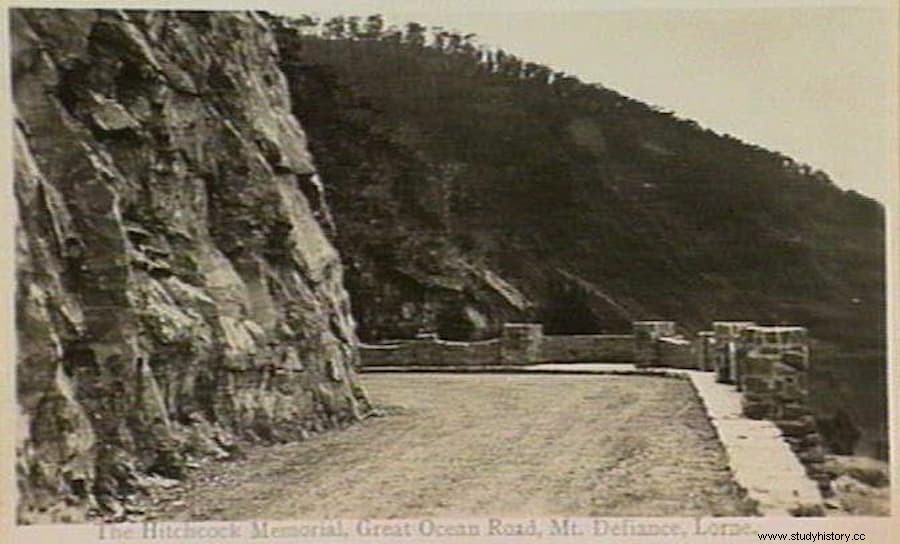When the First World War ended, the soldiers who had participated in it and had been lucky enough to survive returned to their homes. As in all wars, some adapted better than others in that return, but many found themselves with the unpleasant situation of not having a job.
In the case of the Australian soldiers, those who landed on April 25, 1915 in Gallipoli and who forced the Ottoman army to surrender in October 1918 with the capture of Gaza and Jerusalem, of the more than 300,000 sent to the front, 60,000 never they returned and another 150,000 were wounded, gassed or taken prisoner.
So that those who were able to return would at least have something to work on, the chairman of the country's highway board, William Calder, proposed employing them to build a road connecting the hitherto isolated settlements of Australia's southwestern coast. /P> 
The study of the layout of what was provisionally called South Coast Road (South Coast Road) began in 1918. A route was laid out starting from the town of Barwon Heads and following the coast west around Cape Otway, ending near Warrnambool.
In order to undertake the project, a company called Great Ocean Road Trust was formed. , with the president of the country at the head (who donated 3,000 pounds), and who managed to raise 81,000 pounds through private subscriptions and loans.
That money would be returned by charging drivers using the future highway a toll. Once the debt was paid off, the highway would become public property.

Construction began on September 19, 1919 with the participation of 3,000 of the Australian soldiers who had fought in the First World War. The works were carried out mainly by hand, with explosives, picks, shovels and wheelbarrows and very little machinery.
They advanced at the rate of 3 kilometers a month through the desert, with the final stretches of rugged coastal mountains being the most dangerous and difficult.

The soldiers took that as one more military mission. A reconnaissance team preceded the bulk of the expedition, they lived in tents and had a common dining room and kitchen. The camp had little amenities like a piano, games, newspapers, and magazines.
The first section was finished in 1922, opening to traffic in December. It would take another ten years, until 1932, for the road to be completed, with a length of 243 kilometers between the towns of Torquay and Allansford. It was inaugurated in November and, since President Hitchcock had died a few months ago, his car was included in the inauguration caravan and a monument was erected in his honor as Father of the Road .

Traveling that road was quite an adventure, since it was only wide enough for one vehicle, despite the fact that it could be driven in both directions. Evidently, the new road facilitated the urbanization of the surroundings. Thus, those who lived nearby or built a house in its vicinity could request, for 5 pounds, the creation of a crossing to be able to join the road.
On October 2, 1936, the road became the property of the Victoria State Government, and the toll was removed. In the 1960s, with the proliferation of hotels along the Great Ocean Road (Great Ocean Highway) as it was called, some sections were widened. Even so, driving on it remains a challenge to this day, and it is considered one of the great scenic roads in the world.

Travel the entire so-called Costa del Surf and traverses and connects rainforests, beaches, cliffs, and gorges. Among the scenic spots it provides access to are the famous stone Twelve Apostles.
A parallel footpath, the Great Ocean Walk, was built in 2004. . And in 2011 the road was placed on Australia's National Trust list as the world's largest war memorial, dedicated to the fallen soldiers of the First World War.
Fonts
Great Ocean Road (Official Website) / Australian War Memorial / The Sydney Mail / Engineers Australia / Wikipedia
